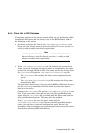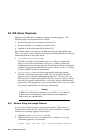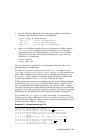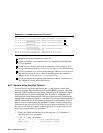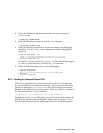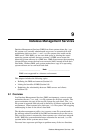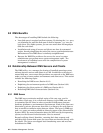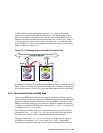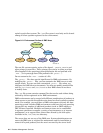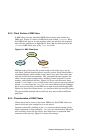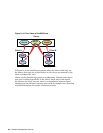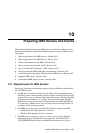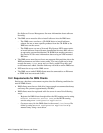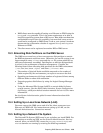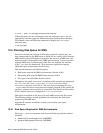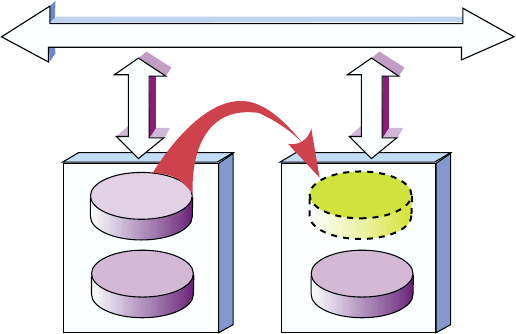
A DMS client’s system disk space (root and /usr areas) is physically
connected to the server instead of to the client. The client accesses that
disk area through a LAN connection with the server. Each DMS client is
booted across the network from its private root area on the server. After it
is booted, the client continues to use its root files and /usr files from the
server’s DMS area. These files appear to the client as if they were on local
disks, as shown in Figure 9–1.
Figure 9–1: File Sharing Between the DMS Server and Client
Server Client
ZK-0934U-AI
Local
Disk
Local
Disk
Local Area Network
Dataless
Area
System
Disk
As indicated in Figure 9–1, clients must have local disks. In addition to local
disks, clients can import file systems from any other computer to which they
have network access. Clients use swap and dump space on their local disks.
9.3.2 Environment Portion of DMS Area
One or more DMS environments can reside in a partition. If you want to
prevent the dmu utility from putting all DMS environments in the same disk
partition, indicate a unique mount point for each DMS environment. The
DMS environment disk space requirements should be calculated using the
worksheets in Appendix B. Then the mount point of ./dmsn.alpha should
be added to the /etc/fstab file.
Each DMS environment contains a customized directory and file system,
consisting of root, /usr, and /var. The dmu utility copies the root area to
the client area when a client is added to the dataless environment.
Figure 9–2 shows the /var/adm/dms portion of a DMS area, it contains
two DMS environments, dms0.alpha and dms1.alpha. Each DMS
environment contains a root and /usr file system. The root file system is
Dataless Management Services 9–3



